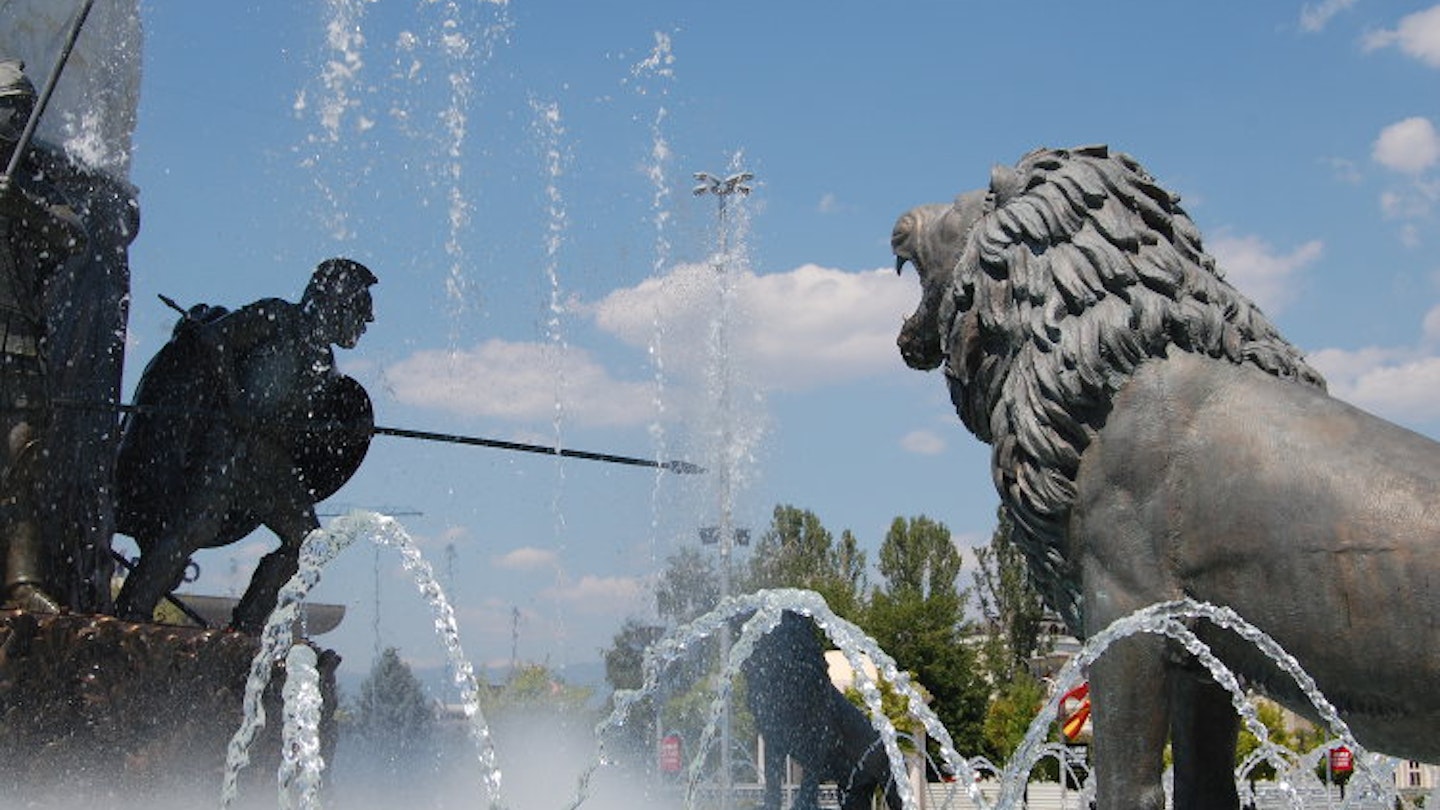Discover Skopje: A Blend of History and Modernity
Skopje has experienced significant transformations in recent years. Whether intentional or not, the capital of North Macedonia has undergone a striking and, some might say, extravagant makeover. Beyond its newly constructed, flamboyant facades and unique embellishments lies a treasure trove of history, atmosphere, and hospitality waiting to be explored.

For a relatively modest European nation, the expenditure of an estimated €200 to €500 million on a rather unneeded redesign of the capital has provoked considerable debate; nevertheless, it took place. The notorious ‘Skopje 2014’ initiative resulted in the construction and renovation of numerous government buildings, museums, and the National Theatre, along with a triumphal arch and two new bridges. The project features an extravagant number of new monuments and bronze statues, with the 22m-tall ‘Warrior on a Horse’ fountain featuring a musical light show in Ploštad Makedonija stealing the spotlight.
This ambitious project aimed to enhance national identity and stimulate tourism. Although it has arguably succeeded in attracting visitors, this may overshadow authentic attractions in a city that has been significant for over 1500 years and is currently one of the best-value city breaks in Europe.

Ottoman and Byzantine Heritage
Skopje’s settlement dates back to the 3rd century BC when it began to emerge as a key trading hub during the rise of Byzantium and Orthodox Christianity around the 6th century AD. It was during this time that the foundations for Tvrdina Kale Fortress were laid, still standing as one of the city’s most remarkable landmarks.
Just a short distance down the hill towards the Vardar River lies another treasured 6th-century relic—the magnificent Stone Bridge. This vital pedestrian connection bridges the gap between the modern city and the historic Ottoman-era neighborhood known as Čaršija. Flaunting the largest bazaar in the Balkans, this old quarter thrived under five centuries of Ottoman rule, showcasing exquisite mosques, hamams, and caravansarais (inns). Numerous buildings have since been transformed into museums and galleries, including the National Gallery of Macedonia and Čifte Amam.
In an interesting contrast, the renowned Orthodox church, the 14th-century Sveti Spas Church, is also located in the same area; stepping inside reveals an intricate wood-carved iconostasis well worth a visit.

The Earthquake Legacy
Interestingly, Skopje is no stranger to dramatic overhauls. On 27 July 1963, a devastating earthquake razed three-quarters of the city, leaving a lasting impact. The clock at the old train station, now part of the Museum of the City of Skopje, still reads 5:17 AM—the precise moment the earthquake struck. Reconstructed under the guidance of Yugoslavia’s President Tito, Skopje emerged as a modernist-brutalist haven. Striking architectural examples from this period can be observed throughout the city, including the Central Post Office building and Sts Cyril and Methodius University of Skopje.
An additional cultural legacy from the earthquake is the Museum of Contemporary Art, established in the ensuing years and hailed as one of the region’s finest, owing to generous donations from artists and collectors globally. For a uniquely peaceful experience, visit the Memorial House of Mother Teresa, which pays tribute to Skopje’s most famous resident, Agnes Gondzha Bojaxhiu.

Best City Escapes
To experience Skopje from a new vantage point, visit Mt Vodno. It is conveniently accessible by city bus followed by a gondola ride, or for the more adventurous, via established hiking trails. The summit offers breathtaking views of the city and the impressive 66m-high Millennium Cross—the largest worldwide—along with a restaurant, gift shop, and picturesque picnic spots. Nearby, the 12th-century Sveti Pantelejmon Monastery is also worthy of admiration, featuring stunning Byzantine art and beautiful surroundings.
Traveling 15km southwest of Skopje will lead you to Canyon Matka. This natural paradise is not only one of the country’s most scenic spots, but also an ideal day trip destination for swimming, picnicking, and exploring its caves and monasteries.

Dining and Nightlife
For a capital city, Skopje offers remarkably affordable dining options, making it a perfect destination to indulge in one of Europe’s most underrated cuisines.
Macedonian cuisine features many staples typical of the Balkans—grilled meats (skara) are particularly popular—but don’t miss the opportunity to try national dishes like tavče gravče (beans in a skillet) and pastrmajlija (fried-dough pie with dried meat).
A great venue to sample these delights is Pivnica An, located in a historic Ottoman inn in the heart of Čaršija. Meanwhile, La Tana on the river’s opposite bank offers a vibrant atmosphere with live music every weekend.
For nightlife, Debar Maalo is a popular neighborhood with a variety of bars, but Čaršija tends to stay open late (often after midnight). Also, be sure to sample the finest Macedonian wines at Vinoteka Temov, a charming wine bar often hosting live guitar music.

Make It Happen
Skopje’s Alexander the Great Airport has become increasingly attractive due to an influx of low-cost flights from Western Europe. Additionally, excellent bus connections link Skopje to other major cities in the region, such as Belgrade, Thessaloniki, and Sofia; however, train services are sadly lacking.
Accommodation options are plentiful and cater to various budgets. Close to the main square, Hotel Solun claims to be the first eco-hotel in the Balkans. For budget-conscious travelers, Shanti Hostel offers a welcoming atmosphere just a three-minute walk from the bus station.
First published in June 2015





